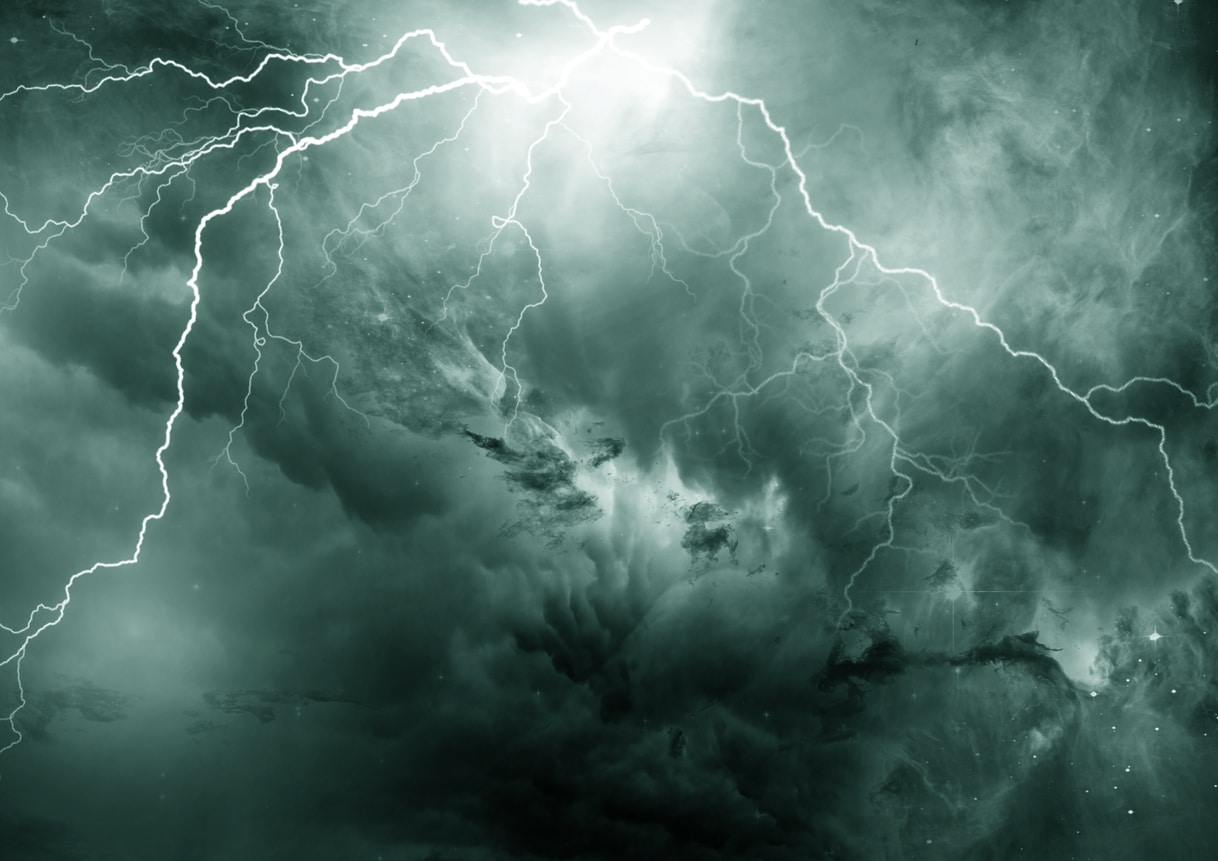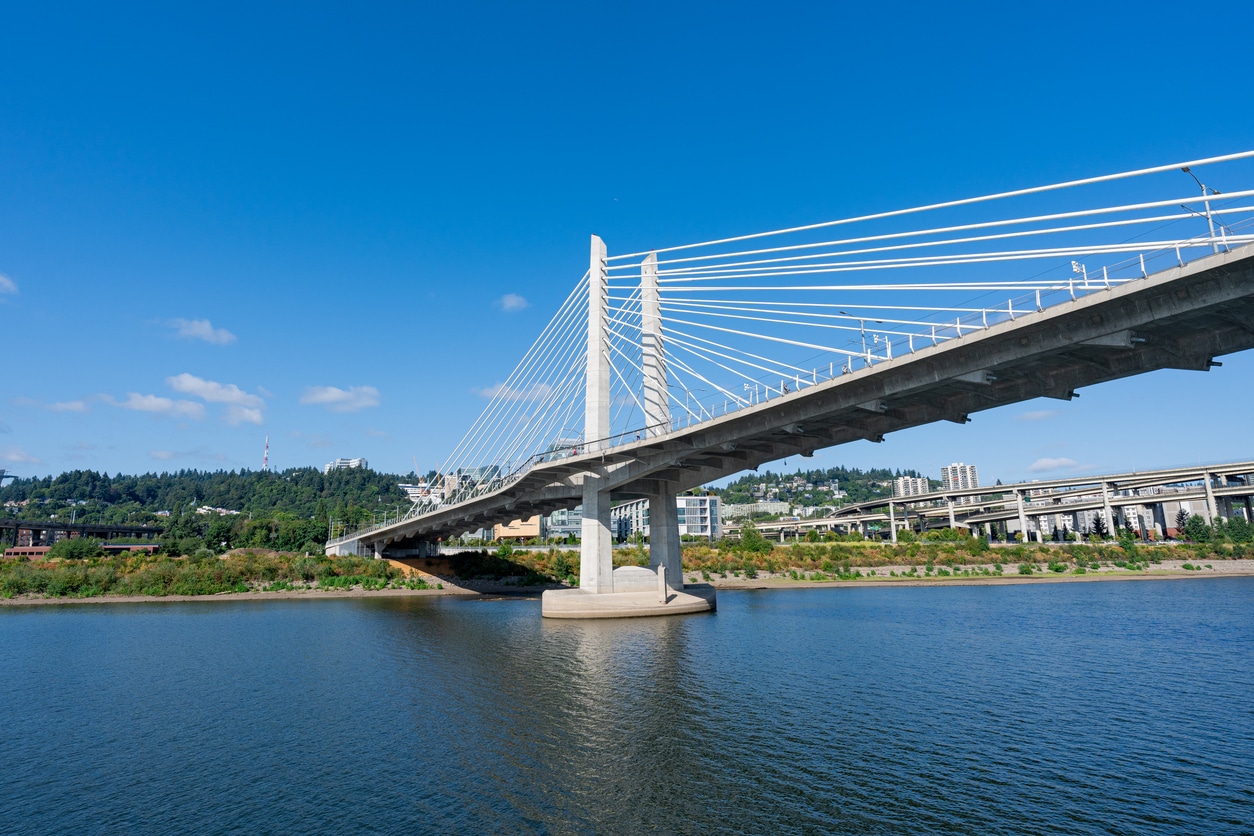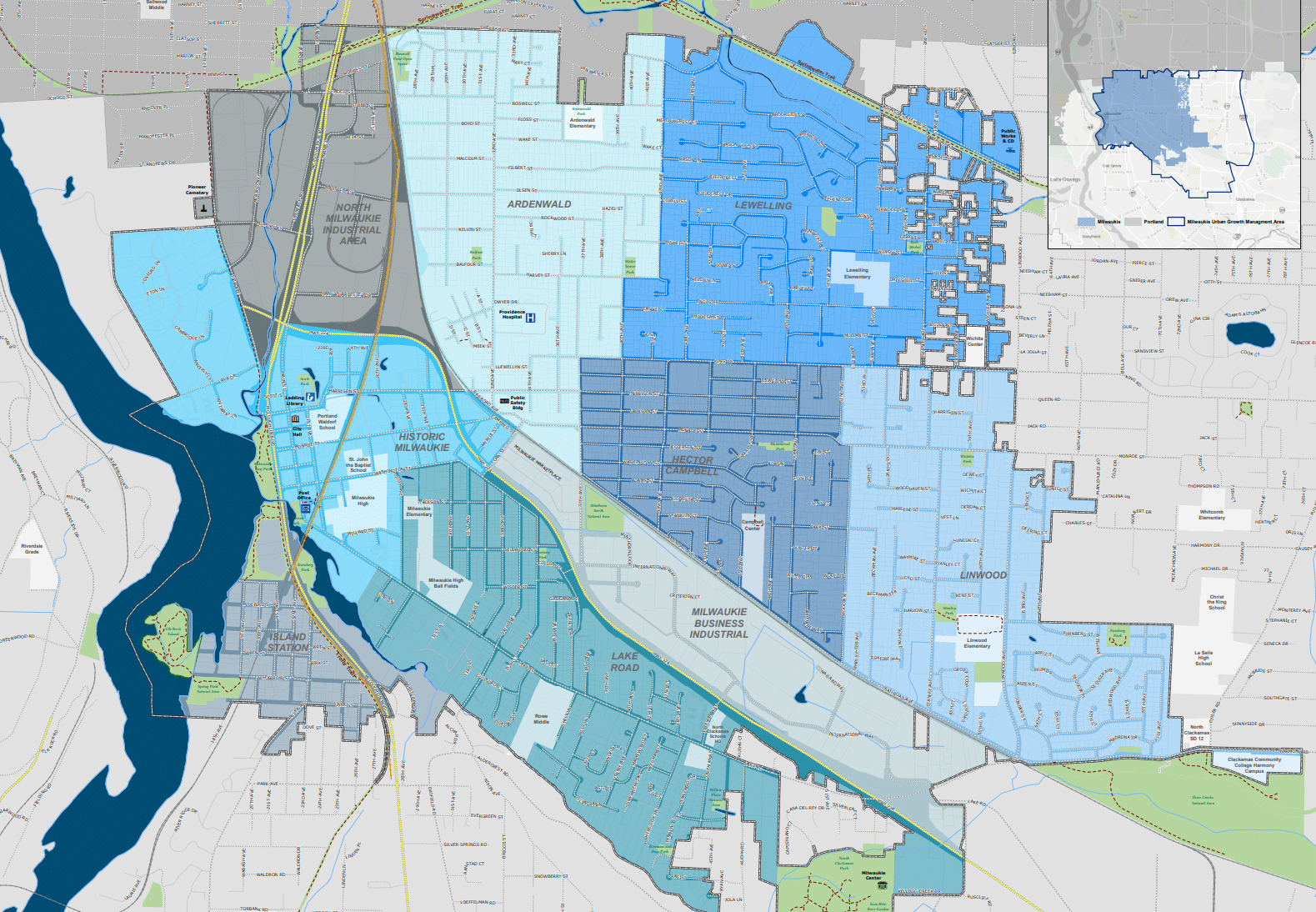Portland, Oregon Natural Disasters: Riskiest Neighborhoods to Buy a Home

Updated 06/2024.
While shopping for a home in the greater Portland metro area, you might focus on a property’s condition to gauge potential repairs and maintenance, but another crucial factor can extend beyond its borders: its proximity to natural disasters. Unfortunately, Mother Nature isn’t always our friend, and she prioritizes some locations more than others.
The best solution for limiting exposure to dangers is to choose a safe location. So, which neighborhoods are best?
The answer depends on the disaster. Here is a list of common dangers in the Portland area and the neighborhoods that are most affected. And if you have your heart set on any of these neighborhoods, we list factors to prioritize to help minimize your exposure.
Risk #1: Portland Landslides
Areas to watch out for: West Multnomah County, from downtown Portland to Scappoose, as well as parts of Gresham to the east
Natural Disaster Risk: Landslides
Don’t buy a home here if: the address has a high landslide hazard risk. The blend of rain, mud, and gravity can be a deadly mix.
Neighborhoods like Arlington Heights and Northwest Portland are known for historic homes and beautiful parks. However, these neighborhoods are also hotspots for landslide activity. The Oregon Department of Geology and Mineral Industries (DOGAMI) classifies the risk as Moderate to High. The land beneath these neighborhoods — going down more than 15 feet — could slump, slide, or sink away. In 2023, Amtrak services were canceled between Portland and Seattle due to a landslide. In 2019, a landslide closed West Burnside Street in Portland for several days. In 2015, a major Gresham roadway opened into a massive sinkhole after a culvert collapsed.
To help homeowners visualize landslide hazards, DOGAMI released new interactive maps in 2018 that allow the public to search for any address in Multnomah County and see the associated landslide hazard. The map is split into three tabs: Landslide Inventory, Shallow Landslide Susceptibility, and Deep Landslide Susceptibility. Landslide Inventory shows landslides that have occurred in the past. The two Landslide Susceptibility maps show likely locations for future landslides, either shallow or deep. A shallow landslide is most often a debris flow and is fairly common in Portland during heavy winter rains. Deep landslides can go down dozens or even hundreds of feet, destroying entire hillsides.
For those evaluating landslide risk outside of Multnomah County, DOGAMI has a statewide risk map as well.
How to Combat Landslides: If you plan to move to any of the above-listed neighborhoods, you can limit your exposure to mudslides by understanding the history of slides in your immediate location and the geology of the land underneath the home. Additionally:
● Inspect slopes: Look for cracks, holes, and other changes. Spotting them early gives you a chance to repair issues before threats increase.
● Build carefully: Avoid building on steep slopes, in ravines, and near drainage facilities.
● Planting vegetation: Deep-rooted trees and plants anchor soil and rocks, preventing landslides. Also, take good care of the plants. Dry trees and plants can be uprooted more easily.
● Building or repairing retaining walls: Retaining walls hold soil back and direct water and debris away from the home. Still, having a wall isn’t enough. It must be installed and filled correctly. If one exists on your land, inspect it to ensure it can withstand excessive force and won’t damage your home when a mudslide occurs.
● Use other diversion measures: If you don’t have retaining walls, use sandbags, concrete trap bags, and lumber to direct mud and debris away from your home.
● Create water channels: Ensure any water runoff moves past your home freely.
Visit Oregon.gov for other mitigation and prevention strategies.
Risk #2: PDX Urban Heat Islands
Areas to watch out for: Central Portland and anywhere density and traffic are high.
Natural Disaster Risk: Hot summer temperatures, low air quality
Don’t buy a home here if: You are sensitive to heat and poor air quality
We tend to think of “natural disasters” as hurricanes, lightning, tornadoes, floods, and earthquakes, but in fact, the CCD reports that excessive heat exposure contributes to more US deaths per year than any of these disasters combined. While Portland, with fewer sunny days than the US average, may not seem hot, we’re #4 in the nation for the Urban Heat Island effect. And when Portland heats up, air quality suffers, too. Between radon, smoke, and vehicle emissions, residents of Multnomah County are at higher risk of cancer from air pollution than anywhere else in Oregon.
An Urban Heat Island occurs when heat trapped by concrete during a hot summer day is radiated back out into the air, resulting in even hotter temperatures the next day and no cooling relief at night. The bigger the buildings, the more concrete, and the fewer trees, the worse the UHI index. A study by Climate Central found that summer temperatures in central Portland can be up to 19 degrees hotter than in rural areas nearby. That means on an average 80°F July day, downtown Portland could be sweltering at close to 100°F.
Heat is bad enough, but pollution is another problem that affects sensitive groups in the denser areas of Portland (view a density map here). Recent summers have been marked by high volumes of wildfire smoke. While smoke is a major air quality problem for Oregon (it took the #1 spot for worst air quality in the world in 2020), ground-level ozone is the pollutant to worry about if you spend much time in central Portland. This invisible gas can make breathing difficult and intensifies certain medical conditions. Traffic generates ozone, and it gets worse when temperatures are high.
How to Combat Heat Islands: The EPA recommends planting trees and other vegetation, which lowers surface and air temperatures thanks to evaporation and shade. Direct shade helps prevent the building materials from heating up, acting as heaters well into the night. Shade limits the heat contact and reduces the need for air conditioning.
Other solutions include installing reflective coatings on roofs and surrounding pavements and using energy-efficient construction. Though these solutions help with issues closer to home, the EPA offers several additional strategies communities can adopt to reduce the heat effect.
Risk Scenario #3: Portland Earthquakes
Areas to watch out for: All of the coastal Pacific Northwest, including the metropolitan areas of Vancouver and Victoria, British Columbia; Seattle, Washington; and Portland, Oregon (especially the western side of the metro area)
Natural Disaster Risk: Earthquake
Don’t buy a home here if: You’re unwilling to prepare for earthquakes and/or seismically retrofit your home.
It can be seen as some relief that the biggest threat to face the Pacific Northwest, including all of Portland, is also the easiest to prepare for. We’ve dedicated entire blog posts to discussing the Cascadia Subduction Zone, earthquake readiness, and where to get the best earthquake hazard maps. Scientists are now predicting a 40% chance of an 8.0 Cascadia earthquake to strike sometime in the next 50 years — the same magnitude of quake that devastated Mexico City in 1985.
Although Portland and surrounding communities could see big damages from earthquakes, the aftereffects could be worse. We’re dependent on major infrastructure for our survival. If we lose the freeway system and most bridges that crisscross Portland, getting basic supplies, including drinking water, to parts of the city will be very tough. That’s why local officials emphasize preparedness — having a two-week water supply and food for every household member. In addition, you can seismically retrofit your home to prevent major structural damage and speed up recovery time after the earthquake hits.
How to Combat Earthquake Damage: Here are ways you can combat issues attributed to earthquakes:
● Retrofit your home: We have an entire article devoted to the subject. Earthquake insurance: Though this does not prevent earthquakes, it aids with the cost of repairs after an earthquake strikes.
● Stay alert: the earthquake early warning system ShakeAlert™, created by the US Geological Survey, is now available in Oregon.
● Stay prepared: The Portland Bureau of Emergency Management offers additional resources to help you plan for an event and prepare an emergency kit.
Risk #4: PDX Floods, like 1996
Areas to watch out for: North Portland along the Columbia, anywhere along the Willamette River, as well as Johnson Creek in Southeast Portland
Natural Disaster Risk: Flooding
Don’t buy a home here if: You’re not willing to invest in flood insurance and show up to stack sandbags when a big storm hits
Floods have plagued the City of Portland and surrounding communities since its founding, but the most recent significant flood happened in 1996. That’s when heavy spring rains combined with snowmelt to inundate local streams and rivers. The flooding affected the entire state of Oregon as well as some areas of Washington, Idaho, and California. In Portland, the Willamette River crested at 11 feet above its normal “flood stage.” Downtown Oregon City was entirely underwater. Downtown Portland was saved thanks to the efforts of hundreds of volunteers who constructed a wall out of plywood, plastic sheeting, and over 40,000 sandbags.
With climate change, snowmelt is expected to happen earlier in the year, coinciding with spring rains. That means we can expect more flooding in Portland. Fortunately, regional governments are stepping up to the challenge, reinforcing the levy along the Columbia River and giving incentives for stormwater reduction programs. It’s impossible to tell what the next big storm will hold, but the 100-year flood map will tell you if your future home is at risk.
How to Combat Flooding Dangers: Here are ways to limit exposure to flooding. Keep in mind that with any upgrades, you should safeguard your property and the surrounding neighborhood.
● See if your home is in a floodplain: You can view your property’s location at https://www.portlandmaps.com/. Type in your address, click the “Public Safety” button under your property description and scroll to the “Hazard” section. You can also visit the Bureau of Development Services.
● Wait to do work: Contact the Bureau of Development Services before altering, re-grading, or building on the property. New construction is only allowed in the floodway if proven safe. Some requirements are building a new structure two feet above the base flood level, or one foot in the Columbia River floodplain.
● Maintain all drainage areas: Keep an eye on storm drains, ditches, and green street planters. Also, any drainage issues or street-related drainage issues should be reported to PBOT 24/7 Maintenance Dispatch. For issues on your property, consult Environmental Services.
● Buy Flood Insurance. Thanks to FEMA, you can save 25% if you are part of Portland’s 100-year floodplain.
Risk #5: Wildfires
Areas to watch out for: Eastern side of Portland nearer the Cascade Range
Natural Disaster Risk: Wildfire
Don’t buy a home here if: You’re not willing to purchase additional wildfire insurance or deal with air quality issues during the summer, and if having a wildfire evacuation plan scares you.
While Portland hasn’t been hit by a true wildfire in recent years, its water supply was dangerously close to the 2023 Camp Creek Wildfire. Although Portland is at a minor risk of wildfires compared to other areas in Oregon, wildfires are quickly becoming a yearly occurrence in the state. Wildfires are not covered under most insurance plans, meaning you’d need extra insurance if a wildfire blew toward the city.
Even with wildfires staying outside the city limits, big impacts can still be felt in the city itself. For example, a wildfire at the Bull Run Watershed in the Mt. Hood National Forest can cause significant issues for Portland’s water supply. Additionally, even without the wildfire making it to the edge of the city or near local neighborhoods, the smoke can cause significant health issues.
In fact, in September 2020, Oregon’s air quality in some areas was so bad due to wildfire smoke that it was breaking records for the poorest air quality on the planet, and that’s not a record you want to hold! This can pose issues for people with asthma, other breathing issues, allergies, and more, so keep that in mind before moving to Portland.
While the wildfires are well-contained in many areas and are unlikely to sweep across Portland, summer and fall are becoming fire season in Oregon, so it’s worth being prepared. Fires can cause traffic issues outside of the city or make commutes to other parts of Oregon hazardous. While Oregon has a robust firefighting service that works diligently to keep the people of Oregon safe from wildfires, it is something to consider before moving into the area.
It’s always a good idea to have a wildfire evacuation plan prepared and practiced with your family. A wildfire evacuation plan should include the following steps once you hear an evacuation may be in order:
■ Get ready: Pack your valuables and any items you need on hand, and ensure family members and pets are close by. Ensure any vehicles have fuel. Be sure to bring vaccination and medical records for pets and family members.
■ Get set: Keep an eye on news sources on social media, the radio, and television so you’re ready if an evacuation order does happen.
■ Go: Only evacuate when you’re given the order to do so to avoid traffic and confusion. Make sure to pack everything up and follow evacuation details given to you by local officials.
While you may find the idea of a wildfire worrisome, in most cases, the only impact you see in the Portland area is some smoke in the air that makes everything smell like woodsmoked bacon. Sure, the haziness during the summer may get old, but living in Portland keeps you safe from most of the wildfires, and there are countless failsafes in place to ensure Portland stays safe even if a wildfire is headed toward the area.
How to Combat Wildfires:Portland.gov offers a long list of suggestions for making your home more fire-resistant. Here are some of the biggies:
● Use fire-resistant building materials: This is one of the most effective ways of limiting fire damage to your home. Fire-resistant materials are available for nearly every element of a home, including exterior decks.
● Create a defensive perimeter: Clear out or limit any items and ground covering that can fuel a fire. This limits how far a fire can travel and provides a safe, clear space for firefighters to do their job.
● Plant fire-resistant plants: You can still have beautiful landscaping while limiting fuel for a fire.
● Keep an eye on your roof: The roof is the most exposed home element to a fire. As with other areas of the home, use fire-resistant roofing materials and opt for a hip or straight gable design since they avoid creating pockets and eddy currents. In addition, use non-flammable siding under eaves and overhangs.
● Heat-resistant dual-pane windows: Dual-pane, energy-efficient windows resist heat and are less prone to cracking all the way through, helping you maintain an extra layer of protection during a fire. Metal shutters can also add another layer of protection.
● Screen attic vents: Use ¼” screens for all vents to prevent airborne embers from entering your home.
● Interior sprinklers: Effective sprinkler systems can prevent interior fires early, providing your home with the same benefits as public buildings.
Is Portland, Oregon a Safe Real Estate Investment?
In addition to posing a few significant natural disaster risks, Portland has many more great things going for it than against it. We have excellent healthcare and citizen emergency response teams. We also have many yoga studios, gyms, spas, wineries, and breweries per capita to help relieve stress! While we encourage home buyers to consider natural disasters before settling on a home in Portland, in the end, we can’t plan for every possible catastrophe, and no area is 100% safe.
Will your home resist the forces of destruction? That’s impossible to say. Is the greater Portland metro a good place to live and invest in a home? We can give that a definite yes. Contact our top 1% Portland real estate team. We’ve been selling homes in the metro for over 20 years and we’d love to hear about your real estate plans. Give us a call or chat with the bot on this site. Let’s connect today!


